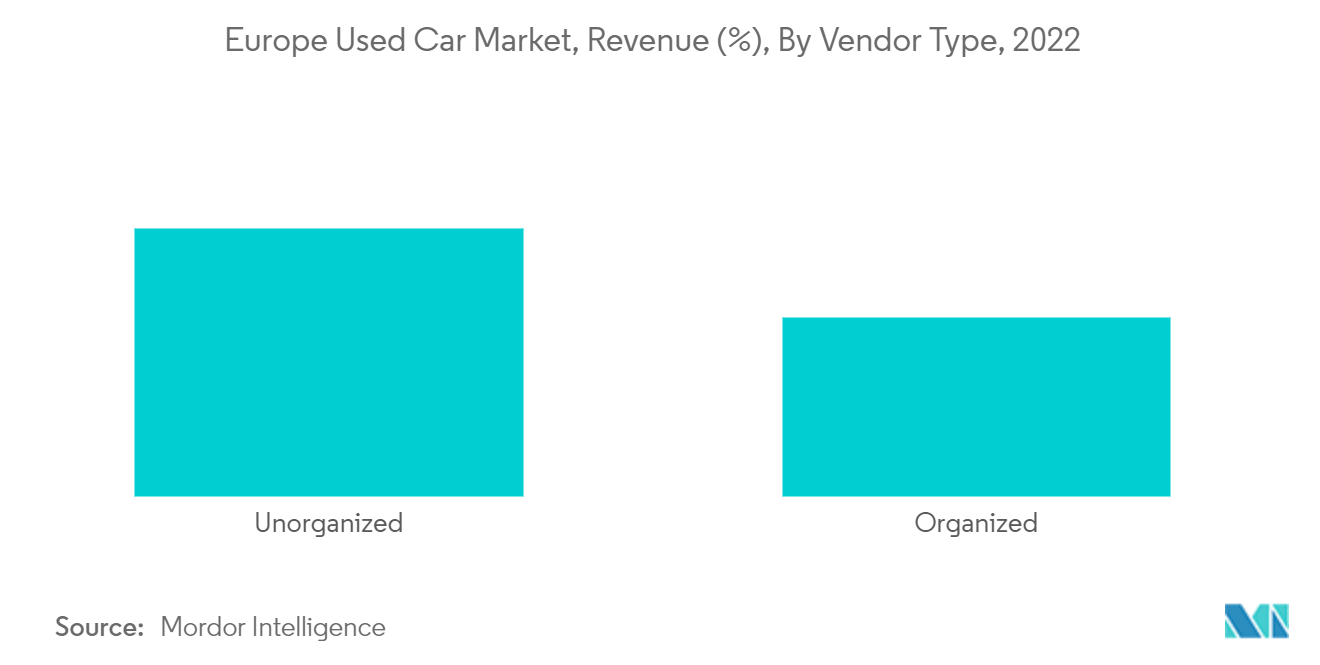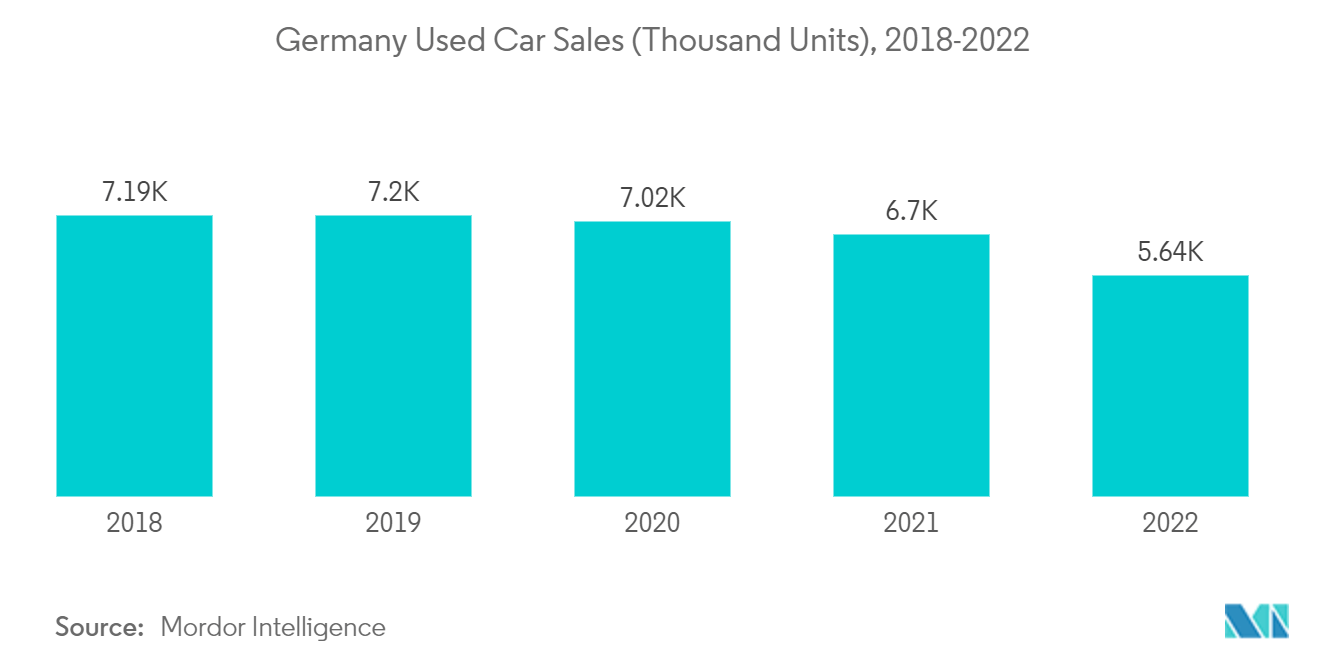Market Trends of Europe Used Car Industry
Online Infrastructure witnessing major growth
The used car market is getting more organized because used car retailers are using digitalization to make market offerings attractive. Facilities such as an enormous number of photos and videos on the online platform and easy online instant finance service are drawing more customers into buying used cars.
Tech-savvy customers in the age group of 25-40 years are demanding features such as end-to-end transactions, doorstep delivery, a digitalized recommendation based on the driving behavior and lifestyle of the customer, and digitalized test drives. Players in the market are providing flawless and smooth access to car specifications, performance reports, and inventory information to customers to assist them in making informed decisions.
Blockchain technology has already brought about a wide variety of developments in various sectors, and the car financing sector seems to be next. For instance, In 2021, Auto1 FT, the leading financial partner of the automotive industry, is eliminating all manual input and paper processes in its core business, car financing.
OEMs and online platforms have brought a new level of clarity to the highly unorganized activity of buying and selling used cars. Online sales are becoming popular among the young generation as they offer a smooth journey and offer the best price to buy. Online stores offer a wide range of product categories and allow customers to purchase goods.
In addition, the COVID-19 pandemic changed consumer behavior and accelerated the trend toward online purchases, which is likely to witness major growth for the market across the region. Such trends in the market indicate active online penetration and, hence, simultaneous developments across the used car market in Europe.

Germany Witnessing Major Growth
Germany is witnessing major growth in the used car market in terms of revenue owing to a fall in new car sales due to the ban on diesel and petrol cars. The government of Germany is planning to entirely ban diesel and petrol cars in the country by 2030, which has led to falling new car sales and older used cars. Rising penetration between multi-brand dealerships and OEM-certified dealerships across the country helps to boost the market during the forecast period.
Growing adoption of car financing and insurance options at used car dealerships in Europe will lead to significant growth in the market. The rise in demand for sports utility vehicles across Germany is likely to see growth in the future.
The growing popularity of sourcing channels across Germany, like buy-sell, park-sell, and trade-in, is witnessing major growth in the market. The buy-sell model is gaining popularity. In this model, the used car dealer buys the used cars from the seller and stores them in its inventory, later sold to the buyers of the used car. This is likely to witness an increase in the number of dealerships adopting the buy-sell model entirely for sourcing used cars at their dealerships.
Several used car industries are introducing new marketplaces, including B2B or B2C, Traditional Brics and Clicks marketplace, Broker Marketplace, Online car retailers, and many others. Such marketplaces serve as a platform connecting sellers and buyers, where both interact directly to complete the transaction. Traditional Brics and Clicks are essentially the online sales channel of traditional car dealers, car rental companies, and car leasing companies, which sell both new and used cars.
The above-mentioned development across the country is likely to witness major growth for the market during the forecast period.


